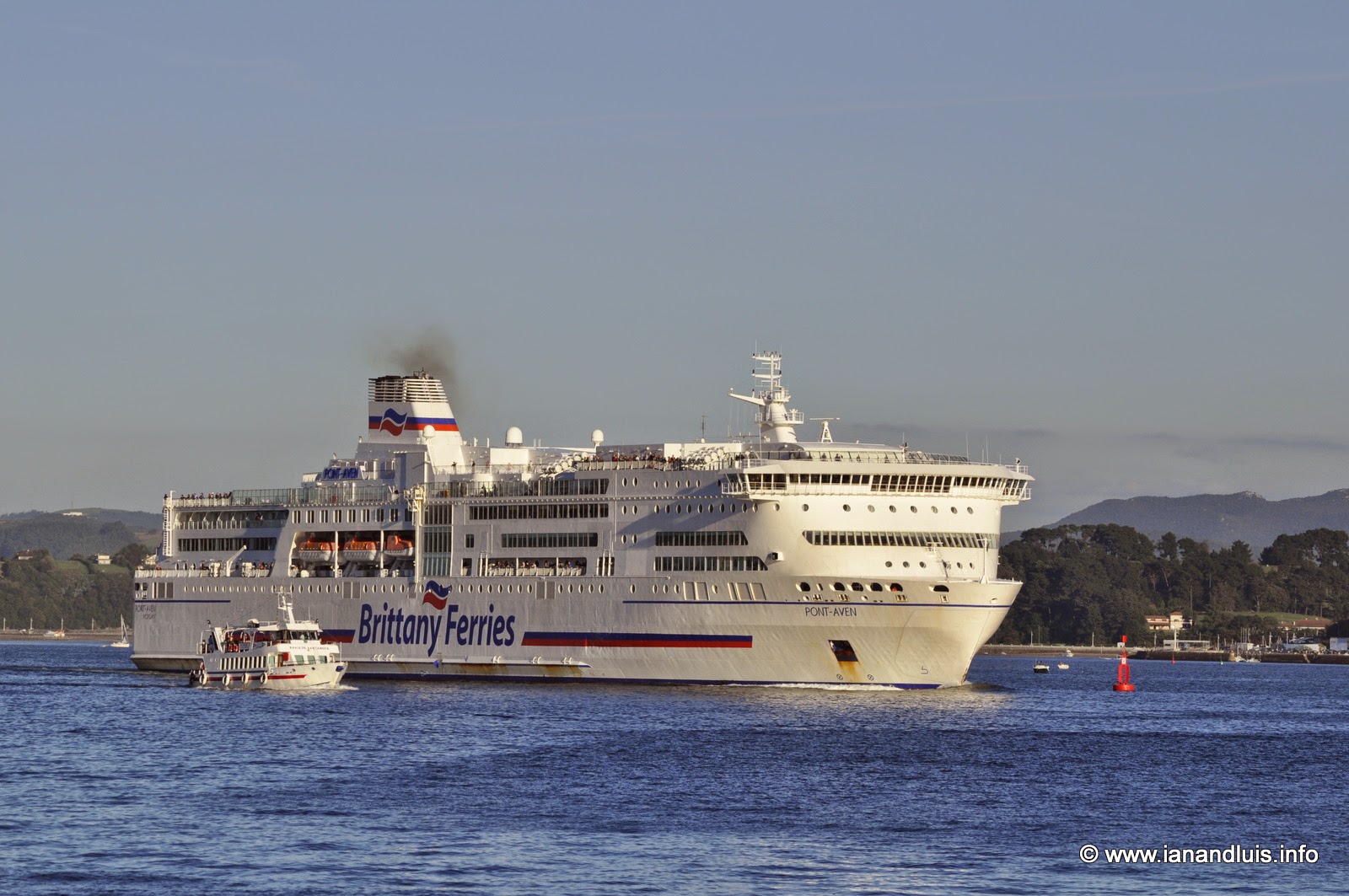We have recently returned from a trip to the UK via ferry. Always preferable to flying (in my opinion), the ferry takes approximately 24 hours from Santander to Portsmouth. I find the journey a little dull, especially when you have made it numerous times. There is on-board entertainment, several bars, a couple of restaurants and a cinema: apart from that there are several decks you can wander and stretch your legs. The saving grace is the probability of spotting a large range of cetaceans.
In the Bay of Biscay it is possible to find a third of the species of cetaceans in the world including many species of whale, dolphin and porpoise. Having made the crossing many, many times over the years I find myself increasingly drawn to observing the vast sea from deck 10 of the ship with the hope of seeing one or more of these beautiful creatures.
This year we were fortunate enough to be accompanied by volunteers from ORCA who are monitoring the bay for cetacean activity, numbers and trends. You can find out more about their work by following the link.
On both the outbound and inbound leg of our journey Luis and I were fortunate enough to see: bottle nose dolphins, common dolphins and pilot whales. The ORCA volunteers and other cetacean spotters spend much more time on deck and are better equipped and dressed to see so much more including Fin Whales, Yellow-fin Tuna, and numerous pods of dolphin and porpoise.
They are not easy creatures to photograph as they dive and skim the surface, darting from side to side, under the bow of the ship and in and out of deep waves. One couple from Portsmouth who regularly do the crossing simply to spot cetaceans estimated that from 7am in the morning until 7pm evening time they had spotted up to 150 dolphins in various size pods and 6 whales... they were however dressed in warm clothing and had a range of equipment with them including GPS, binoculars, scopes and cameras with long, long lenses. Ten decks up, they seem tiny despite the dolphins being 2 meters in length.
There is something rather special about seeing these creatures in their natural habitat and their inquisitiveness brings them near the ship as it traverses the deep shelf that hosts the fish, plankton, krill, octopus and squid on which they feed. It is sad to know that irresponsible disposal of plastic is a major cause of their demise, often mistaking it for food, the cetaceans are slowing killed as their stomachs and gullets are filled with non-digestible and poisonous plastics.
In the Bay of Biscay it is possible to find a third of the species of cetaceans in the world including many species of whale, dolphin and porpoise. Having made the crossing many, many times over the years I find myself increasingly drawn to observing the vast sea from deck 10 of the ship with the hope of seeing one or more of these beautiful creatures.
This year we were fortunate enough to be accompanied by volunteers from ORCA who are monitoring the bay for cetacean activity, numbers and trends. You can find out more about their work by following the link.
On both the outbound and inbound leg of our journey Luis and I were fortunate enough to see: bottle nose dolphins, common dolphins and pilot whales. The ORCA volunteers and other cetacean spotters spend much more time on deck and are better equipped and dressed to see so much more including Fin Whales, Yellow-fin Tuna, and numerous pods of dolphin and porpoise.
They are not easy creatures to photograph as they dive and skim the surface, darting from side to side, under the bow of the ship and in and out of deep waves. One couple from Portsmouth who regularly do the crossing simply to spot cetaceans estimated that from 7am in the morning until 7pm evening time they had spotted up to 150 dolphins in various size pods and 6 whales... they were however dressed in warm clothing and had a range of equipment with them including GPS, binoculars, scopes and cameras with long, long lenses. Ten decks up, they seem tiny despite the dolphins being 2 meters in length.
There is something rather special about seeing these creatures in their natural habitat and their inquisitiveness brings them near the ship as it traverses the deep shelf that hosts the fish, plankton, krill, octopus and squid on which they feed. It is sad to know that irresponsible disposal of plastic is a major cause of their demise, often mistaking it for food, the cetaceans are slowing killed as their stomachs and gullets are filled with non-digestible and poisonous plastics.








Just tried to comment on this nice post - but my longer one disappeared, don't know where.
ReplyDeleteOh dear, isn't it a pain when that happens. Thanks for reading Veronica.
Delete